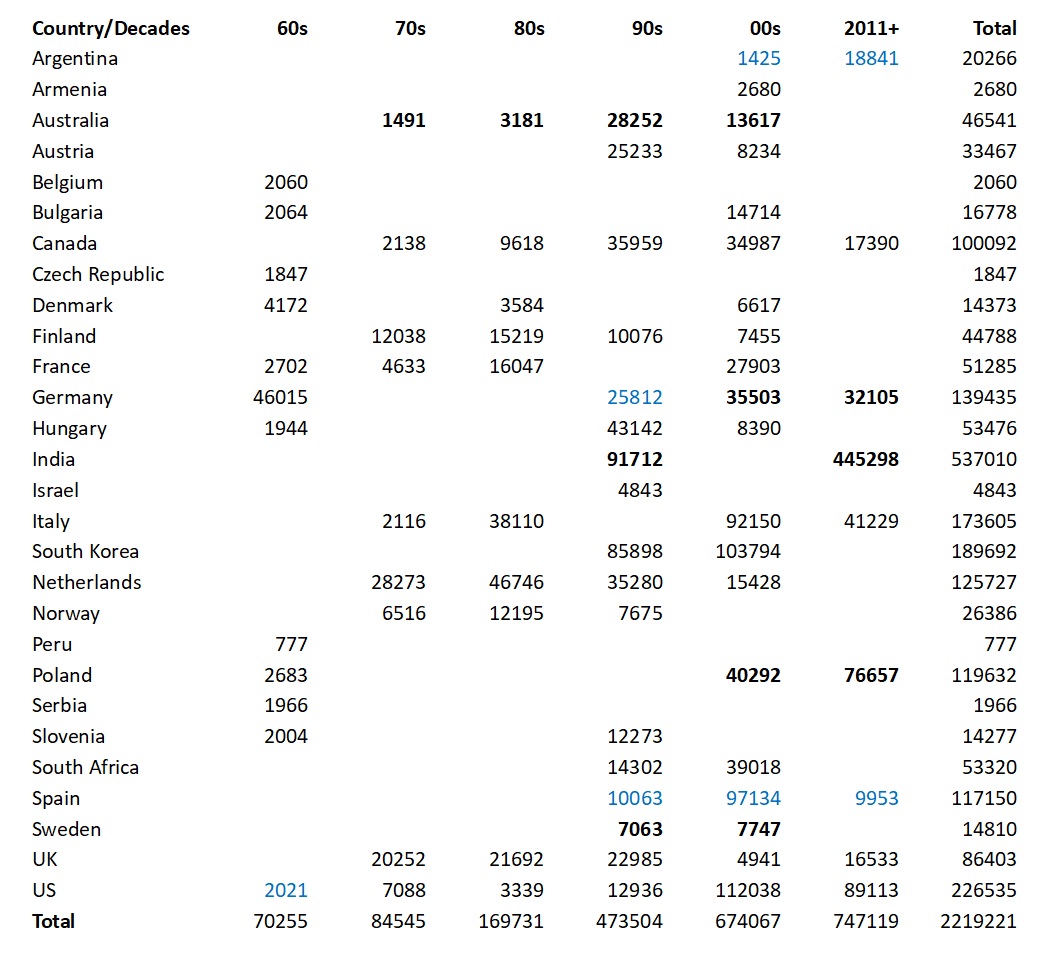The table below presents the current distribution of diaries by country and time. Note that extensive time series are limited to only a handful of countries. Yet, often these series offer the most comprehensive data available to investigate trends in behaviour. For instance, MTUS data has been employed to investigate shifts in physical activity, dietary habits, and sleep among others.
As more datasets are integrated, the series will become longer, facilitating a deeper analysis of temporal trends. This is especially relevant for certain countries, notably in Asia, which have witnessed swift socio-economic transformations in a very short period of time, making it possible to grasp behavioural change with relatively short series of time use surveys.
Number of diary days available for historical cross-national comparative research on time use patterns

Each cell of Table 1 indicates the number of diaries available for analysis corresponding to a specific country and decade. The table encompasses surveys from the current release as well as the upcoming one, and includes restricted samples (highlighted in bold). Cells shaded in blue represent diaries originating from regional samples or those that, for one reason or another, are not nationally representative. Occasionally, multiple surveys occur within a single decade; in such instances, the diaries are aggregated.


